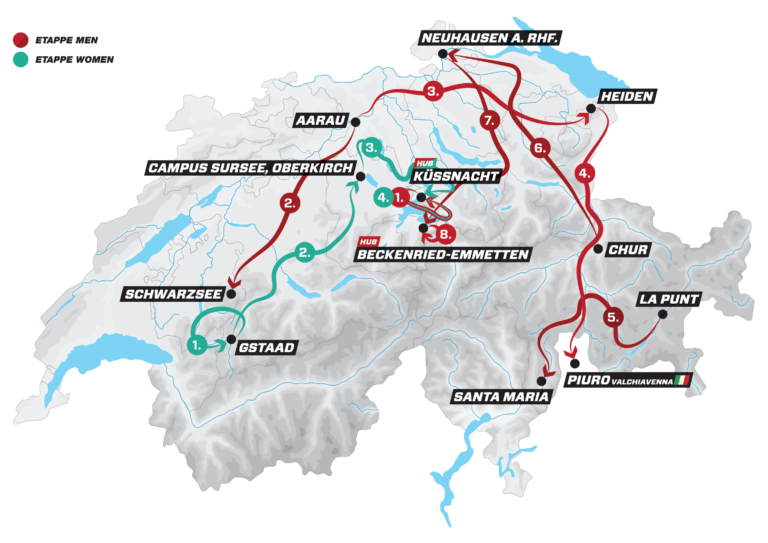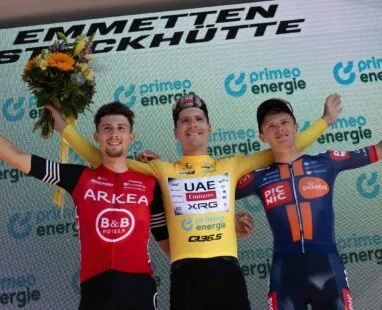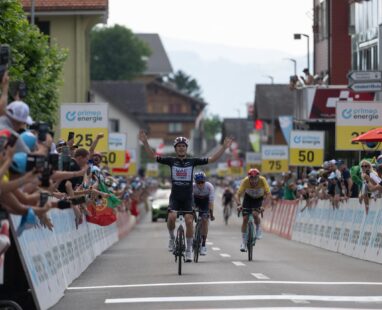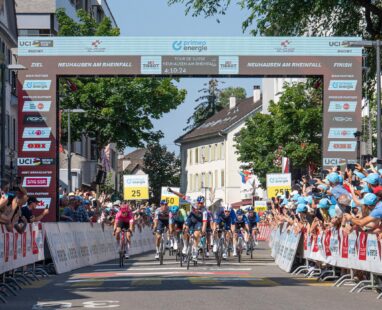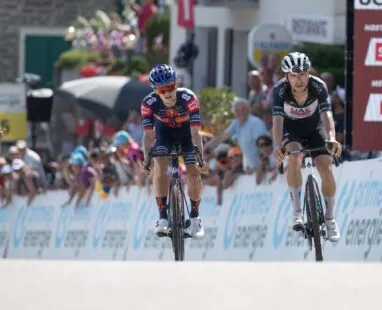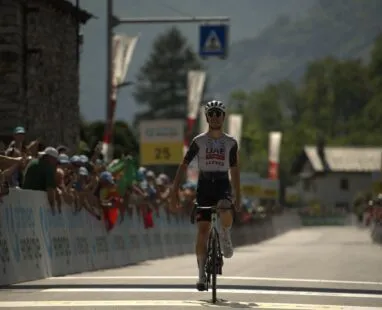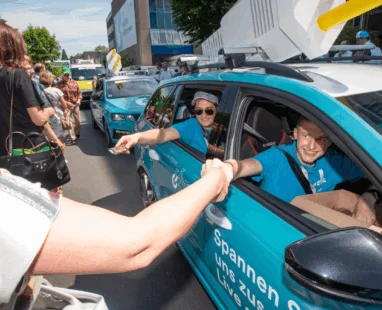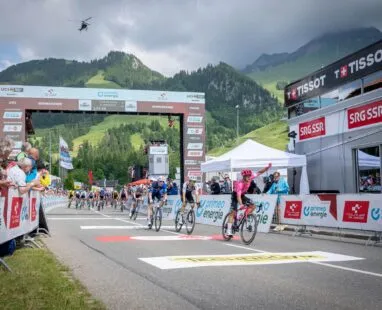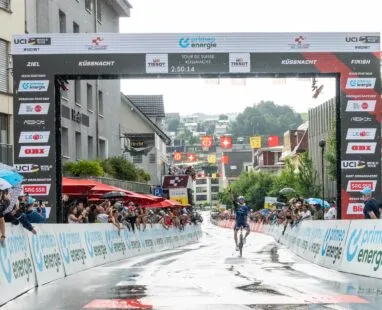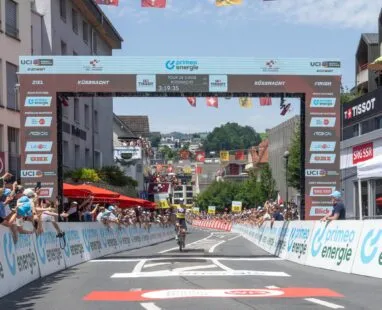The Tour de Suisse brings together 42 professional cycling teams (23 men and 19 women) for 10 days of competition around the country. Over 250 athletes participate, along with three to four times as many crews traveling with support cars, team buses and equipment vehicles.
We estimate that about 5% of race week CO2 emissions come from team activities. Add to that total travel related emissions, oftentimes in the form of international flights for the athletes. A majority of the teams’ emissions are unavoidable but there is room for improvement in several areas.
In March of 2023, we asked all the teams taking part in the race about their climate initiatives, including whether they mitigate emissions linked to their travels.
Climate initiatives of the teams
We are pleasantly surprised by the fact that sustainability is already an important topic for many teams, even if the level of commitment still varies considerably from team to team. Teams with lower budgets seem to have a more difficult time to focus on sustainability. Being successful in races remains the primary objective. However, small teams also have a smaller footprint to start with. Compared to World Tour teams, Continental teams have less resources to spare, but that may result in the implementation of economically sound travel policies that are also good for the environment. Restricting flights on short trips is an example. Another example is to not use team buses when practical, which can have a large impact on emission totals.
Teams with larger budgets and sponsors that are very active on sustainability issues are naturally further along. A few teams go as far as quantifying their emissions, which helps them prioritize their actions, such as direct reductions and indirect offsetting. We see an increasing number of teams install solar panels on support vehicles, for instance. Several teams organize tree planting days off season for their athletes and support crews, which offers the additional benefit of further connecting the group.
Sponsors play a crucial role
Having a sponsor that supports sustainability efforts seems critical. Tree planting programs for instance are often organized in partnership with sponsors. Sponsors can also provide resources to set up a sustainability strategy. That partnership generates the most innovative solutions. For instance, one team auctions each year a frame or other technical material, with the proceeds going directly to environmental programs. This is a great way to have an impact, while also raising awareness with the general public.
All in, we see a lot of activities taking place across the teams. We are still at the beginning of the journey, however. For teams starting to tackle climate issues, it seems oftentimes difficult to understand where to start and what to focus on. With this article and the use case examples to follow, we hope to offer some guidance to those interested in doing more or in search of ideas and direction.
More about the detailed teams’ sustainability initiatives will be posted on our TdS Sustainability Page soon.
